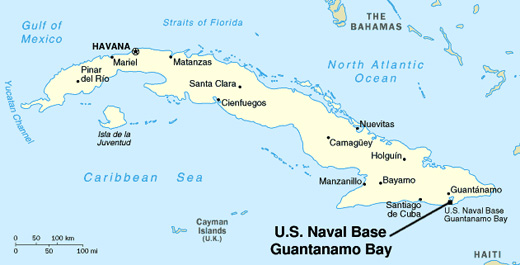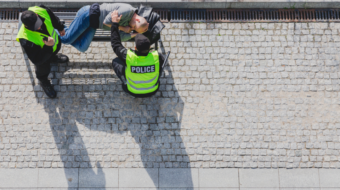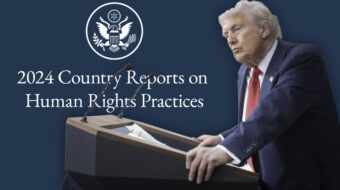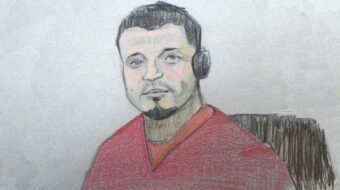
“It is time that the U.S. returns Guantánamo to Cuba; and the only one who is capable of doing so is President Obama,” said recently Michael E. Parmly, former head of the United States Interests Section in Cuba, who held that office in Havana from 2005 to 2008.
Parmly made these comments to the Mexican news agency NOTIMEX with reference to a document entitled “The Naval Base at Guantánamo Bay: U.S. and Cuba dealing with a historic anomaly,” published by the Fletcher School of Massachusetts. The diplomat considered that its return to Cuba should be programmed in a model similar to that of the Panama Canal and said that the governments of Havana and Washington would be interested in applying it.
Similarly, American historian and academic Jonathan Hansen, associate professor at the David Rockefeller Center for Latin American Studies at Harvard University, highlighted in Havana the complexity of the issue and urged Washington to promote a debate aimed at the return of the Guantanamo naval base to Cuba.
“There is practically no one in the United States, apart from a few historians, academics and diplomats – including me – who is talking about the need to return Guantánamo to Cuba … The problem is how to insert this topic in the general conversation,” said Hansen in a workshop with Cuban experts recalling the 110th anniversary of the occupation of the island by the United States.
The naval station at Guantánamo Bay was established in 1898 when the United States gained control of Cuba from Spain, at the end of the uneven Spanish-American War, when the Spanish colonial forces were about to be defeated by the Cuban independence fighters.
In those circumstances, the U.S. government obtained a perpetual lease over the territory that became effective in February 1903 and was signed by the first president of the Republic of Cuba, Tomás Estrada Palma.
The newly born “independence” of Cuba bore the birthmark of the Platt Amendment affixed to its Constitution, which turned it into a virtual American protectorate. While acknowledging that Cuba maintained its sovereignty, Washington would exert complete control and jurisdiction over the area of Guantánamo Bay in order to operate naval and coaling stations.
In 2002, under President George W. Bush, this strip of land was turned into a prison for suspects of acts of terrorism. Under this guise it has served as a place to practice torture and for the commission of other violations of human rights as part of the “war on terrorism” declared after the attacks of September 11, 2001, in New York and Washington.
During his 2008 presidential campaign, Barack Obama promised that, if elected, he would shut down the prison in 2009, a promise he has since reiterated several times. But the prison is still open and functional, to the President’s and the northern nation’s discredit. Parmly recalled that at a press conference in 2013, Obama stressed that keeping Guantánamo did not necessarily provide greater security for the USA.
“It’s expensive. It is inefficient. It hurts us in terms of our international position. It decreases cooperation with our allies in the efforts against terrorism. It needs to be closed,” said Obama. Parmly believes this is why Obama is the only president who could start the process of delivering the territory of Guantánamo to the Cubans, because he understands that it affects the U.S. position in the international arena.
According to Parmly, who now lives in Geneva, “the history of the naval base, with its complex relations with the Cuban state, goes far beyond the question of the detainees. Guantanamo is not U.S. territory. Cuba is its final owner.”
That means that, “If we want to be democratic on this issue, we must acknowledge that the owners are the Cubans, whose opinion has never been asked,” he said. In addition, the Cuban people oppose Guantanamo’s occupation with a sentiment “that goes far beyond Communist rhetoric. The issue is closely linked to Cuban identity, the image of Cuba itself, present and future,” commented the former U.S. government official.
It is stimulating for Latin Americans – and especially for Cubans – that the need not only to close the torture center at Guantánamo, as a debt the United States owes to humanity, begins to be talked about, but also returning to Cuba the territory it occupies in the shameful Guantanamo Naval Base.
Manuel E. Yepe Menéndez is a lawyer, economist and journalist. He is a professor at the Higher Institute of International Relations in Havana. He was Cuba’s ambassador to Romania, general director of the Prensa Latina agency, vice president of the Cuban Institute of Radio and Television, founder and national director of the Technological Information System (TIPS) of the United Nations Program for Development in Cuba, and secretary of the Cuban Movement for the Peace and Sovereignty of the Peoples. This article is a CubaNews translation edited by Walter Lippmann.
Photo: U.S. Naval Station Guantanamo Bay occupies 45 square miles of Cuban land and water at the southeastern end of Cuba. Wikipedia










